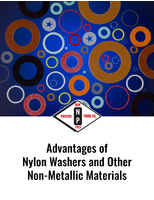NEMA publishes standards for positron emission tomography.
Press Release Summary:
Featuring standards for PET, regardless of scintillator used, Revision NU 2-2007 establishes methods of performance measurement on all PET systems. Standards are more accurate at measuring scatter fraction and random coincidences than previous versions. Major change since last edition addresses improvement in inclusion of cameras with intrinsically radioactive components. Spatial resolution measurement has been expanded to include measurement and reporting of source position.
Original Press Release:
NEMA Publishes Standard NU 2-2007 Performance Measurements of Positron Emission Tomographs
ROSSLYN, Va., June 27, 2007-The National Electrical Manufacturers Association (NEMA) has published NEMA NU 2-2007 Performance Measurements of Positron Emission Tomographs. This revision includes standards for positron emission tomography (PET), regardless of the scintillator used, and establishes methods of performance measurement on all currently available PET systems. The new standards are more accurate at measuring scatter fraction and random coincidences than previous versions.
The major change since the last edition addresses an improvement in the inclusion of cameras with intrinsically radioactive components. Affected tests include count losses and randoms, as well as sensitivity. The spatial resolution measurement has been expanded to include the measurement and reporting of source position. Appendix A has been deleted.
According to Michael E. Casey, Ph.D., a member of the Coincidence Imaging Task Force chartered by the Nuclear Standards and Regulatory Committee, NEMA NU 2-2007 specifies methods that can be performed on all currently available PETs. "These include single and multiple slice, discrete and continuous detector, and time-of-flight instruments, as well as multi-planar and volume reconstruction models, dedicated PETs, and other coincidence-capable imaging systems," he said. "Wherever possible, future developments that could be readily anticipated were taken into account."
The committee has not specified methods that may be particularly appropriate for evaluating time-of-flight instruments, pending further evaluation of those instruments by the clinical and scientific communities.
Casey said that while this standard offers several advantages, it is the patient who gains the most. "A person undergoing a study benefits when a hospital or physician is able to compare tomographs from different manufactures to determine which best meets the needs of the patient," he said.
When the first standard was developed in the early 1990s, PET was a research instrument that focused primarily on the brain. During the 1990s, the focus shifted to clinical applications with the discovery that PET was an excellent tool for imaging cancer. The revised NEMA NU 2-2007 follows this trend and takes these applications into account. The focus of the standard has changed to highlight whole-body imaging.
The contents and scope of NEMA NU 2-2007 Performance Measurements of Positron Emission Tomographs. may be viewed, or a hardcopy or electronic copy purchased for $64.00 by visiting NEMA's website at www.nema.org/stds/nu2.cfm, or by contacting IHS at 800- 854-7179 (within the U.S.), 303-397-7956 (international), 303-397-2740 (fax).
NEMA is the trade association of choice for the electrical manufacturing industry. Founded in 1926 and headquartered near Washington, D.C., its approximately 450 member companies manufacture products used in the generation, transmission and distribution, control, and end-use of electricity. These products are used in utility, medical imaging, industrial, commercial, institutional, and residential applications. Domestic production of electrical products sold worldwide exceeds $120 billion. In addition to its headquarters in Rosslyn, Virginia, NEMA also has offices in Beijing, S£o Paulo, and Mexico City.



